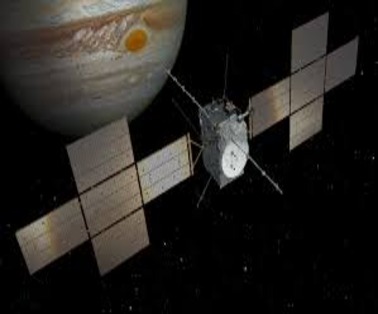The European Space Agency (ESA) is all set to launch the Jupiter Icy Moons Explorer, or Juice, mission from its spaceport in French Guiana on an Ariane 5 launcher.
Key Points On Juice Mission
- It is planned to reach Jupiter in 2031
- The mission aims to carry out a detailed exploration of the Solar System’s largest planet and its icy moons, which potentially have habitable environments.
- Juice has been constructed by an industrial consortium led by Airbus Defence and Space based on the parameters provided by the ESA.
Mission Objectives Of Juice Mission
- To make detailed observations of the giant gas planet and its three large ocean-bearing moons — Ganymede, Callisto and Europa”, by using remote sensing, geophysical and in situ instruments.
- Although the mission will examine all three moons, the main focus will be on Ganymede, as it is the largest moon in the Solar System — larger than Pluto and Mercury — and the only one to generate its own magnetic field.
- To create a comprehensive picture of Jupiter by trying to understand its origin, history and evolution.
- To analyse the chemistry, structure, dynamics, weather, and climate of Jupiter and its ever-changing atmosphere.
Significance Of Juice Mission
- Scientists for quite some time have known that these three moons of Jupiter possess icy crusts, which they believe contain oceans of liquid water underneath, making them potentially habitable.
- Juice will help probe these water bodies by creating detailed maps of the moons’ surfaces and enable the scientists, for the first time, to look beneath them.
- Scientists believe that this would help them provide much-needed insight into how such a planetary system and its constituents are formed and evolved over time
Life On Jupiter

Jupiter Missions
- Only two other spacecraft have ever examined Jupiter:
- The Galileo probe, which orbited the gas giant between 1995 and 2003
- Juno, which has been circling the planet since 2016.
- By the time Juice reaches Jupiter, another spacecraft, NASA’s Europa Clipper, would already be orbiting the planet — scheduled to be launched in October this year, Europa Clipper would arrive at Jupiter in 2030 and aims to study its Europa moon
To Download Monthly Current Affairs PDF Click here
Get Inspiration from CLAT 2025 Topper
Click here to get a free demo
Everything About CLAT 2025



